Dredge mechanic is the base for one of the most successful legacy decks, Ichorid. You will definitely meet Golgari Grave-Troll there. We will be studying this card today.
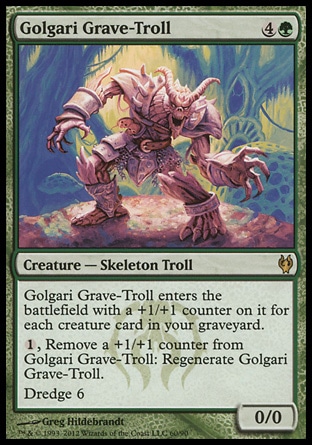
Oracle Text:
Creature — Troll Skeleton
Golgari Grave-Troll enters the battlefield with a +1/+1 counter on it for each creature card in your graveyard.
{1}, Remove a +1/+1 counter from Golgari Grave-Troll: Regenerate Golgari Grave-Troll.
Dredge 6 (If you would draw a card, instead you may put exactly six cards from the top of your library into your graveyard. If you do, return this card from your graveyard to your hand. Otherwise, draw a card.)
Golgari Grave-Troll is a green creature with two subtypes: Skeleton and Troll. As such, while on the battlefield, it will gain a bonus off Death Baron’s static effect, and it will be a legal target for Undead Slayer’s activated ability.
If you control Golgari Grave-Troll, Thrun, the Last Troll and Skeletal Vampire, then through Coat of Arms’s static ability Golgari Grave-Troll gains +2/+2, and the remaining two gain +1/+1.
In all zones except the battlefield, the Troll’s power and toughness are always equal to the printed values — 0/0.
Golgari Grave-Troll’s first ability is a static one and generates a replacement effect: Golgari Grave-Troll enters the battlefield not as is, but with a +1/+1 counter per creature card in its controller’s (indicated by the word “your”) graveyard. This ability is static, so it cannot be countered.
It doesn’t matter through what means the Troll hits the battlefield: you can cast it, or just put in onto the battlefield from your hand or from any other zone through a related effect (such as Show and Tell).
If an effect puts Golgari Grave-Troll onto the battlefield from the graveyard, the Troll’s first ability effect will take it to consideration as well. The effect replaces the Troll’s entering the battlefield, so it functions before the troll hits the battlefield, and in this case the troll card is still in the graveyard at that time, so it counts.
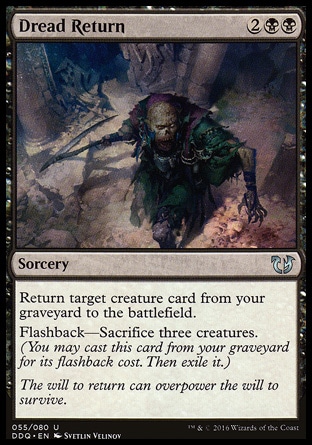
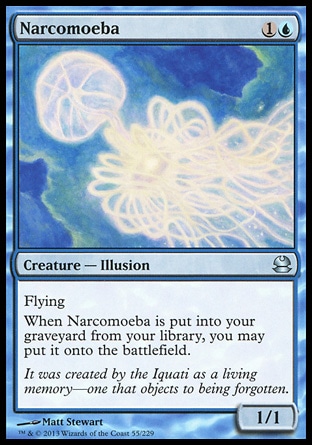
Note that if you cast the troll from your graveyard (for instance, through the effect of Havengul Lich’s activated ability), it enters the battlefield from the stack, meaning, it is not in the graveyard at the fateful moment, and the effect of the Troll’s first ability doesn’t take it to account.
When the Troll appears on the battlefield, other replacement effects may intrude, too. According to the rules, they are applied in the following order: first, the effects of changing control, then copy effects, then all other effects.
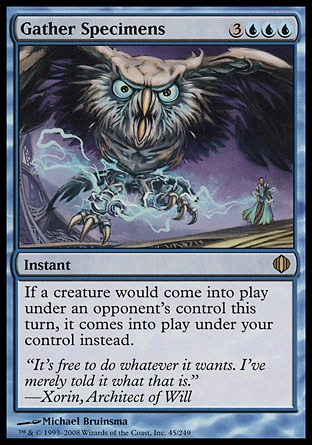
If the cunning opponent casts and resolves Gather Specimens before your Troll has to enter the battlefield, it enters the battlefield under the opponent’s control, and the creature cards will be counted in his graveyard to define the number of +1/+1 counters to enter with. This happens because the effects of change of control are applied first among all enter-the-battlefield replacement effects.
If you control Essence of the Wild, then upon entering the battlefield, the Troll will fall under two effects: copy effect of the Essence and the effect putting +1/+1 counters on it. The copy effect of Essence of the Wild is applied first, so after it is applied, the Troll doesn’t have its ability, and it enters the battlefield without counters as a copy of Essence of the Wild.
If you copy the troll with Clone-like creatures, the number of counters on the original troll doesn’t matter — counters aren’t copiable values. However, the ability text of the original does get copied, so the first ability, whose effect is applied after the copy effect, will count the number of creatures currently in the graveyard, and put that many +1/+1 counters on the clone.
Golgari Grave-Troll’s second ability is activated (its text contains a colon). You may activate it any time you have priority as long as you can pay its cost: {1} and remove one +1/+1 counter. If there are no counters on the Troll, the ability cannot be activated.
As the ability resolves, a regeneration shield is created which on application replaces destruction with removing damage, tapping and removing from combat.
Since activating this ability involves removing a +1/+1 counter from the Troll, thus impacting its toughness, trouble is possible if handled carelessly. Should Golgari Grave-Troll’s toughness become less or equal to zero while it is on the battlefield, upon the nearest SBA check it will hit the graveyard. Regeneration doesn’t help with this in any way.
If a Troll as fat as N+1/N+1 already has N damage marked on it, activating its second ability will “shrink” it down to N/N, which will lead to it being destroyed upon SBA check as a creature that received lethal damage. The ability generating a regeneration shield will still be on the stack at that moment, so it cannot help.
Dredge
702.51a. Dredge is a static ability that functions only while the card with dredge is in a player’s graveyard. “Dredge N” means “As long as you have at least N cards in your library, if you would draw a card, you may instead put N cards from the top of your library into your graveyard and return this card from your graveyard to your hand.”
Thus, Dredge is a static ability. It means it doesn’t use the stack and it cannot be countered. If a player decides to “Dredge instead of Draw”, the opponent cannot obstruct that. You can only respond (counter the spell or ability; exile the graveyard or shuffle it into its owner’s library) to the spell or ability allowing to draw a card. At the time the spell or ability is resolving, neither player has priority, therefore
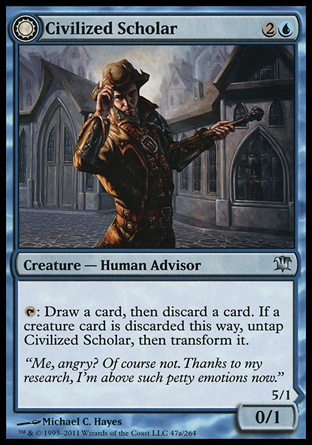
while resolving Civilized Scholar’s activated ability;

while resolving Desperate Ravings;
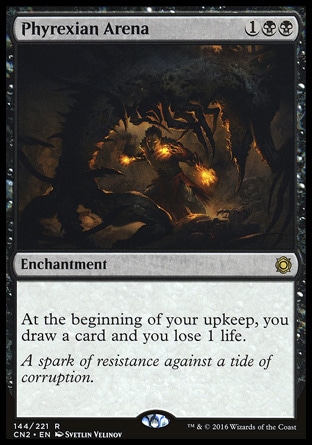
while resolving Phyrexian Arena’s trigger,
the opponent cannot cast a spell or activate an ability that would prevent the player from dredging.
It is yet harder to prevent a player from drawing a card for the turn, since that is a turn-based action, it is performed before the active player gets priority at draw step. As a result, the only things that can obstruct drawing at this point are prohibiting effects from static abilities like those of Maralen of the Mornsong or Omen Machine.
If the player dredges, the original event, i.e. drawing a card, doesn’t occur.
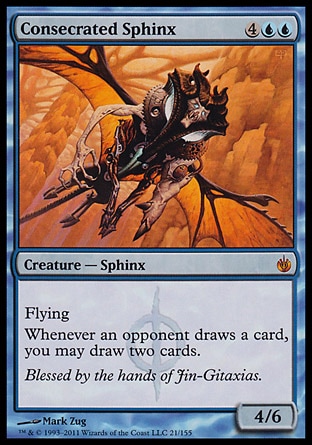
If you dredge instead of drawing, an opponent’s Consecrated Sphinx doesn’t trigger. He doesn’t get freebie cards.

If by the time Sylvan Library’s trigger resolves you have replaced all drawing by dredge, you have not drawn cards, so you won’t have to decide whether to put a card on top of the library or pay 4 life.
A player may replace any single card draw with dredge, whenever it happens. Each card drawn is a separate event. In terms of the game, to “draw two cards” is actually to “draw one card, draw one card”. Thus, when you resolve Desperate Ravings with an empty hand, you can dredge Golgari Grave-Troll instead of drawing the first card, then dredge again instead of the other draw, then discard one of those at random as the final part of the resolution. And by the way, the second time you would draw, you can dredge the card that hit the graveyard as you dredged the first one, for instance Stinkweed Imp that dredges a lot.
Some triggered abilities may go off or effects apply when a card is dredged. Suppose in the last example we move one of these cards into the graveyard:
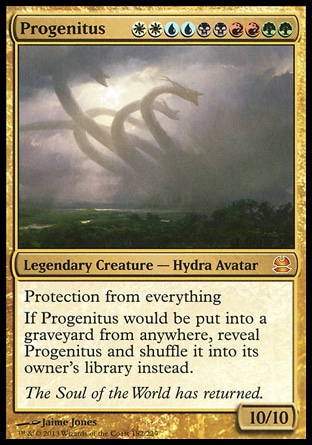
Progenitus has a static ability generating a replacement effect. It means that while the ability exists, Progenitus simply cannot hit the graveyard. Instead, it is immediately shuffled into its owner’s library. This happens after dredging is over.
Emrakul’s triggered ability goes off when it hits the graveyard during dredge. The player will shuffle the graveyard into the library only after Desperate Ravings resolves fully, Emrakul’s trigger is put onto the stack, becomes the top element of the stack with all players having passed in turn’s order.

Narcomoeba’s trigger goes off at dredge when it hits the graveyard from the library. The cunning opponent may hinder our plans to put Narcomoeba onto the battlefield by, say, exiling our graveyard with Tormod’s Crypt or Nihil Spellbomb before the amoeba’s trigger resolves.
If the cunning opponent controls Leyline of the Void, that doesn’t prevent you from dredging a Golgari Grave-Troll already in the graveyard even though the cards will never end up in the graveyard, but will be exiled due to the replacement effect of the Leyline’s static ability.
The graveyard is an ordered zone. According to the Tournament rules:
3.14. Graveyard Order
In formats involving only cards from Urza’s Saga™ and later, players may change the order of their graveyard at any time. A player may not change the order of an opponent’s graveyard.
And the Comprehensive rules state:
404.3. If an effect or rule puts two or more cards into the same graveyard at the same time, the owner of those cards may arrange them in any order.
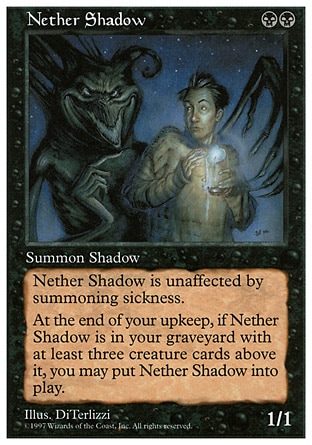
When you participate in a Legacy or Vintage tournament, you cannot simply reorganize your graveyard. However! Since the effect of dredge instructs you to put all N cards into your graveyard simultaneously, you can use the rule 404.3 and put them in the order you like, for instance to favor Nether Shadow’s conditional trigger.
Replacing a draw with a dredge leads to changing the contents of your graveyard through the process of resolving a spell or an ability. If a spell or ability asks for this information on resolution, then according to the rule 608.2g, the answer is defined only once — when the effect is applied.
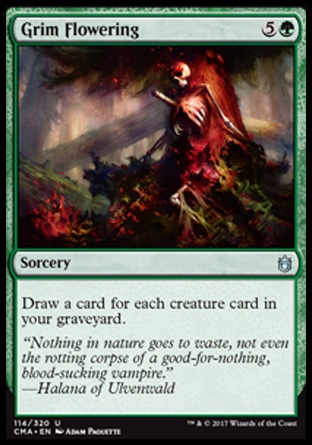
While resolving Grim Flowering, there was only one creature card in the graveyard — Golgari Grave-Troll. You may dredge it instead of your only card draw. If other creature cards hit the graveyard in course of that, that doesn’t change the number of cards you are supposed to draw.
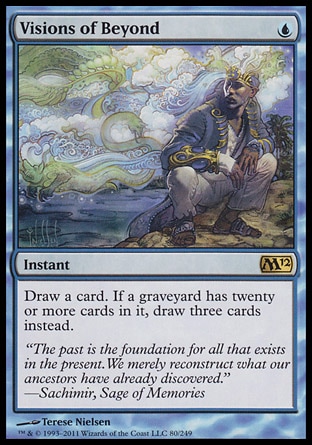
If you decide to resolve Visions of Beyond with 15 cards in the graveyard and add six more there through dredging Golgari Grave-Troll for the first (and the only for now) card draw, your graveyard counts 20 cards, but it doesn’t change the effect of Visions of Beyond. Just as with Grim Flowering, the number of draws you need to perform is defined at the beginning of resolution.
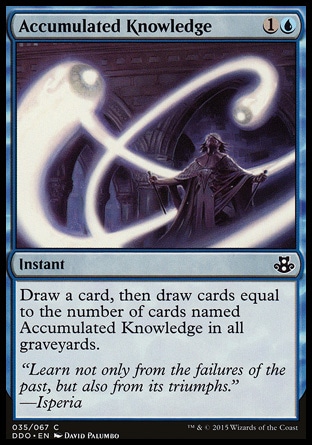
As you resolve Accumulated Knowledge, while none other are in the graveyard, and use dredge instead of the first draw, you will get to draw as many, as many copies of Accumulated Knowledge will have hit the graveyard by then. If you replace the second draw with dredge, the number of draws won’t increase from there: it is fixed at the moment of applying the effect.
702.51b. A player with fewer cards in his or her library than the number required by a dredge ability can’t put any of them into his or her graveyard this way.
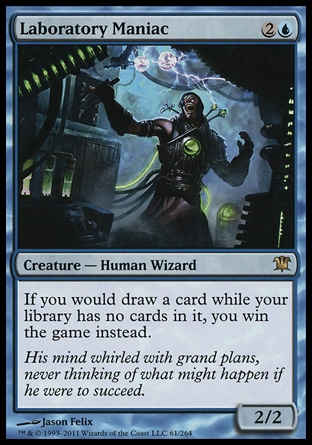
If you control Laboratory Maniac and have less than 6 cards in your library, Golgari Grave-Troll cannot help you to get a quick win no matter how easy it seems. According to the rules, you must have at least 6 cards in your library to be able to dredge the troll.
Nota bene:
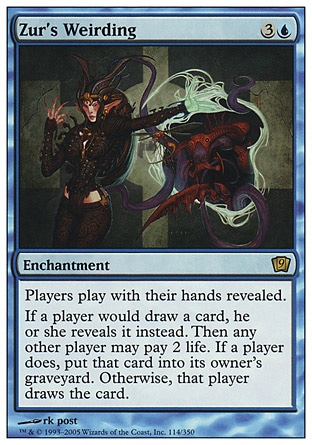
Zur’s Weirding generates a replacement effect. If you have the troll in your graveyard, there are two replacement effects. If you were to draw a card, you may choose either to apply. If Zur's effect is the one applied and nobody pays 2 life, you have another chance to draw, meaning another chance to replace the draw with dredge.
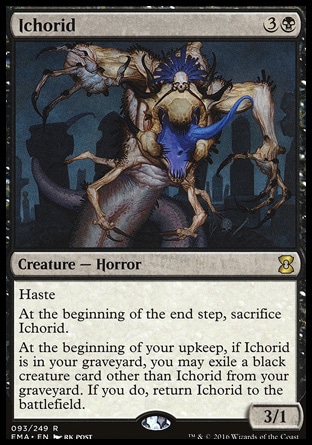
Ichorid’s trigger will go off regardless of whether you have a black creature card or not. But if Golgari Grave-Troll is there, in response to Ichorid’s trigger you may dredge, for instance by using Cephalid Coliseum’s ability, and possibly get yourself a black creature card in your graveyard.
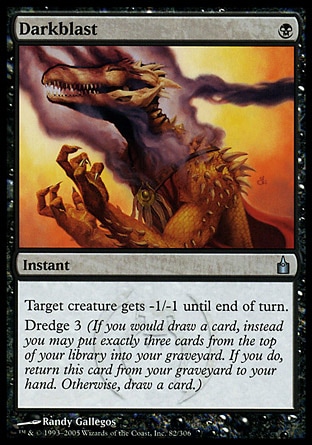
How can you kill a 2/2 creature with one Darkblast?
Easy! As long as you have two black mana available. During your upkeep, cast Darkblast at this creature. During your draw step, dredge Darkblast and cast it again.
At the end of our review let me remind that in Two-Headed Giant players of one team share steps. If one of the players wishes to dredge at the draw step, this happens simultaneously with the other player’s card draw. So one cannot draw a card and then discuss whether the other should dredge. First you both take a decision, and then either draw or dredge.
- ⇑ It is only a matter of triggered and activated abilities. Static abilities do not use the stack and they do not resolve. They are constantly getting information about the game state. Ref. Tarmogoyf.
Translated by Witas Spasovski

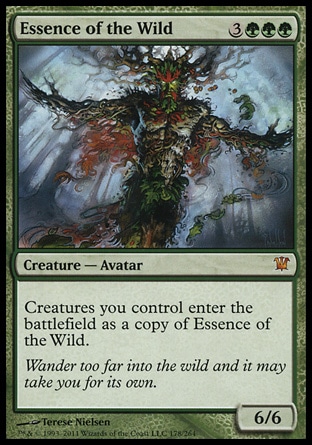

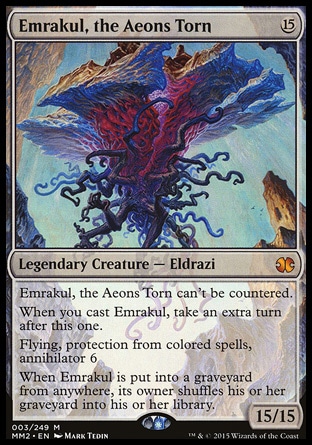
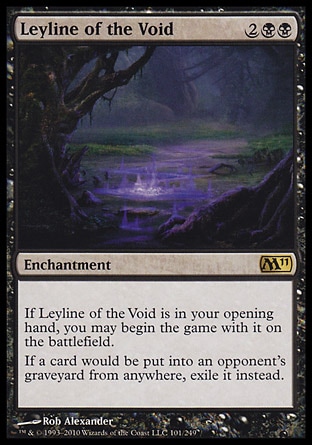
If you only have one creature card in the graveyard, that card being Golgari Grave-Troll, you target it with Dread Return cast for its Flashback cost — sacrifice three Narcomoebas, your Troll will hit the battlefield with four +1/+1 counters.